Access Control Options
The permissions of fully initialized backend users are the result of the rights granted in their own user records and all the user groups they belong to.
The permissions are divided into the following conceptual categories:
- Access lists
- These grant access to backend modules, database tables and fields.
- Mounts
- Parts of the page tree and server file system.
- Page permissions
- Access to work on individual pages based on the user id and group ids.
- User TSconfig
-
A flexible and hierarchical configuration structure defined by TypoScript syntax. This typically describes "soft" permission settings and options for the user or group which can be used to customize the backend and individual modules.
All user TSconfig options are described in the TSconfig Reference
Access Lists
Access lists are defined at group-level. Usage of access lists for defining user rights is described in chapter Setting up user group permissions. The various access lists are described here for reference, with additional technical details, where necessary.
Note
Access list don't apply to admin users. As mentioned before, admin users have access to every single feature of the TYPO3 CMS backend.
- Modules
-
This is a list of submodules a user may be given access to. Access to a main module is implicit, as soon as a user has access to at least one of its submodules.
Not all submodules appear in this list. It is possible to restrict a submodule to admin users only. This is the case, in particular, for all Admin Tools and System modules, as well as the Web > Template module.
Note
This is the only access list that is also available for definition at user-level.
- Dashboard widgets
-
A list of the available dashboard widgets a user may be allowed to use on the dashboard.
Note
This section is only available with activated dashboard system extension.
- Tables for listing
-
A list of all tables a user may be allowed to read in the backend. Again this in not a list of all tables in the database. Some tables are low level and never appear in the backend at all, even for admin users. Other tables are restricted to admin users and thus do not show up in the access list.
Restricting a table to admin users only is done using the TCA property "adminOnly".
Note
All tables that are allowed for modification (see below) are also allowed for read access, so no need to select them in this list as well.
- Tables for editing
- This is exactly the same list of tables as before, but for granting modification rights.
- Page types
-
TYPO3 CMS defines a number of page types. A user can be restricted to access only some of them.
For a full discussion on page types, please refer to the page types chapter.
- Excludefields
- When defining column tables in TCA, it is possible to set the "exclude" property to "1". This ensures that the field is hidden to users by default. Access to it must be explicitly granted in this access list.
- Explicitly allow/deny field values
-
When a field offers a list of options to select from, it is possible to tell TYPO3 CMS that access to these options is restricted and should be granted explicitly. Such fields and their values appear here.
The related TCA property is "authMode".
- Limit to languages
- By default users can edit records regardless of what language they are assigned to. Using this list it is possible to restrict users to working only in selected languages.
When a user is a member of more than one group, the access lists for the groups are "added" together.
Mounts
TYPO3 CMS natively supports two kinds of hierarchical tree structures: the page tree (typically visible in the Web module) and the folder tree (typically visible in the File module). Each tree is generated based on the mount points configured for the current user. So a page tree is drawn from the DB Mounts which are one or more page ids telling the Core from which "start page" to draw the tree(s). Likewise is the folder tree drawn based on file mounts configured for the user.
DB mounts (page mounts) are set by pointing out the page that should be mounted for the user (at user or group-level):
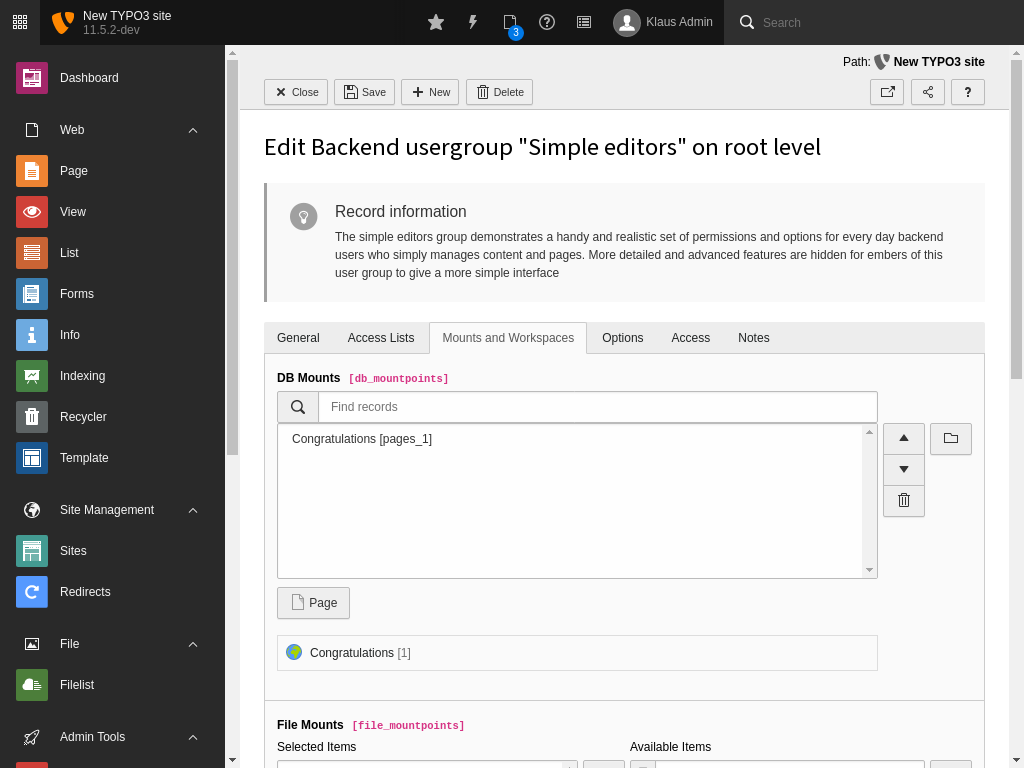
The DB mounts for group "Editors"
This is what the user will see:
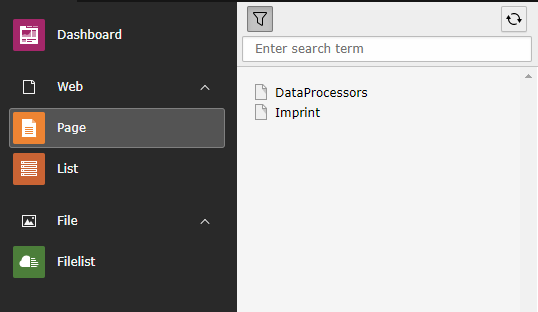
Warning
A DB mount will appear only if the page permissions allow the user at least read access to the mounted page (and subpages). Otherwise nothing will appear at all!
File Mounts are a little more difficult to set up, as they
involve several steps. First of all, you need to have at least
one File Storage. By
default, you will always have one, pointing
to the fileadmin directory. It is created by TYPO3 CMS
upon installation.
Note
The fileadmin directory is the default place where
TYPO3 CMS expects media resources to be located. It can be
changed using the global configuration option
$GLOBALS.
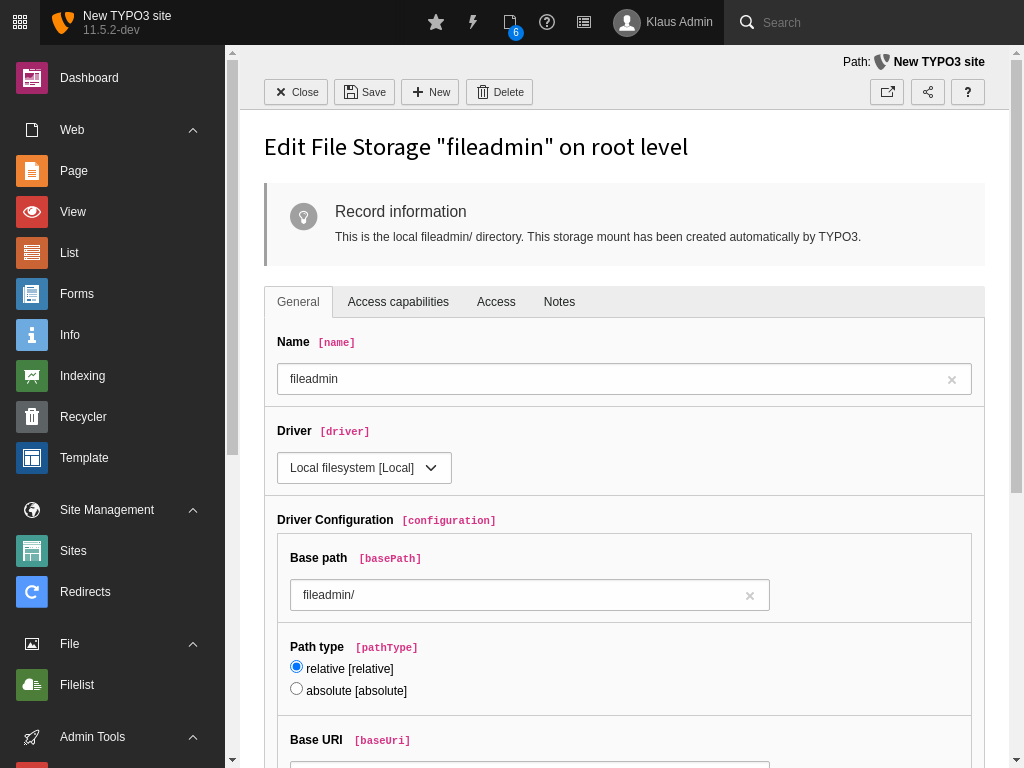
A File Storage is essentially defined by a File Driver and the path to which it points.
Next we can create a File Mount record (on the root page), which refers to a File Storage:
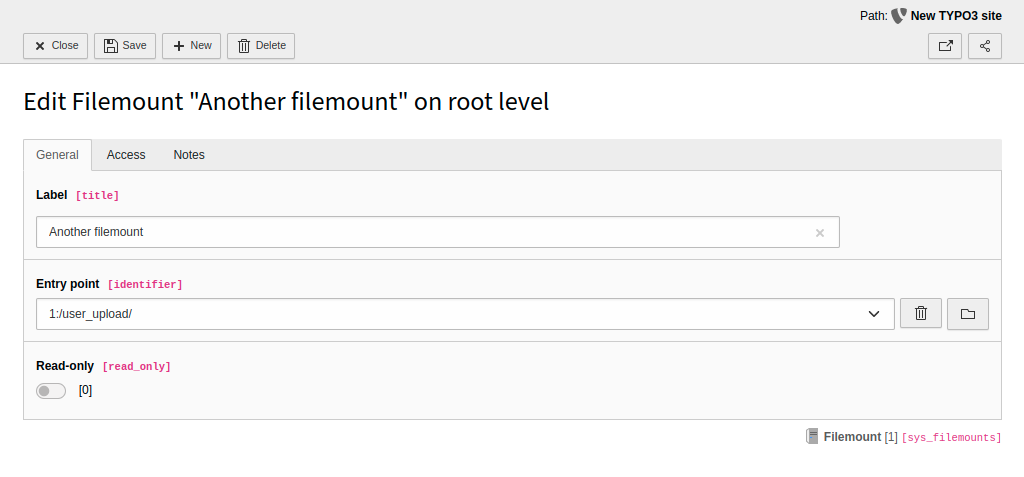
A file mount pointing to the "user_upload" directory
When defining a File Mount, you can point to a specific folder within the chosen File Storage. Finally the mount is assigned to a user or group:
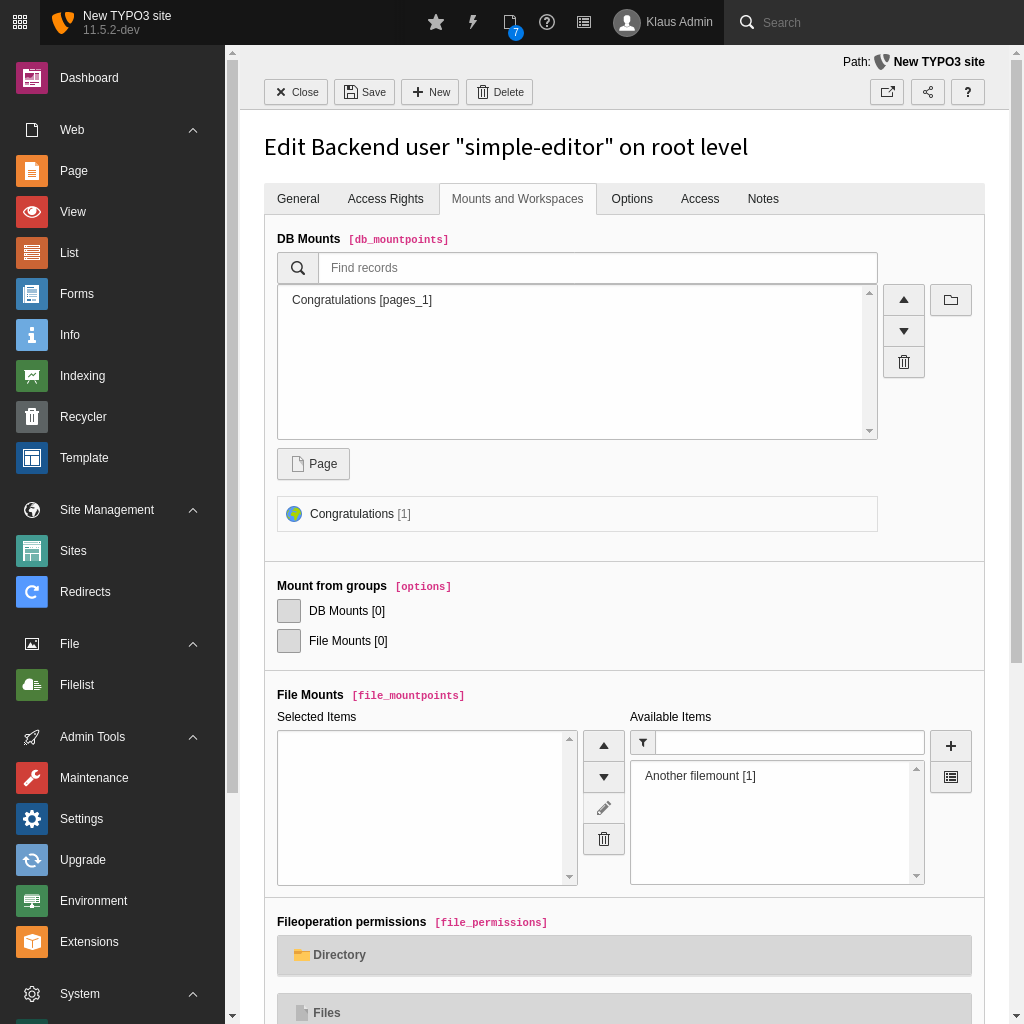
The file mount is assigned to the "Editors" group
After a successful configuration, the file mount will appear to the user:
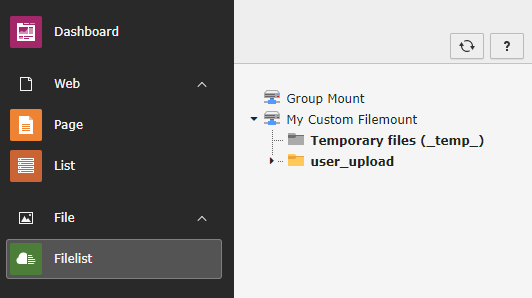
DB and File Mounts can be set for both the user and group records. Having more than one DB or File Mount will just result in more than one mount point appearing in the trees. However the backend users records have two flags which determine whether the DB/File Mounts of the groups the user belongs to will be mounted as well! This is the default behaviour. So make sure to unset these flags if users should see only their "private" mount points and not those from their groups:
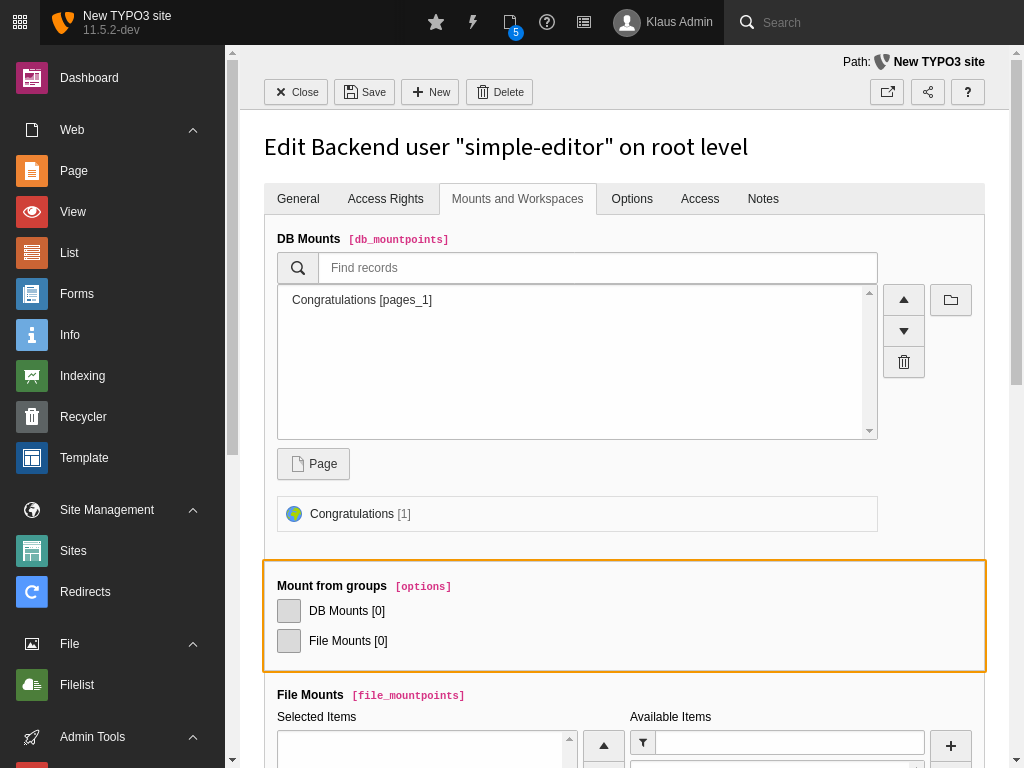
By default DB and File Mounts from groups are set for member users
"Admin" users do not need mount points. As always, they have access to every part of the installation.
Page Permissions
Page permissions are designed to work like file permissions on UNIX systems. Each page record has an owner user and group and permission settings for the owner, the group and "everybody". This is summarized here:
- Every page has an owner, group and everybody-permission
- The owner and group of a page can be empty. Nothing matches with an empty user/group (except "admin" users).
-
Every page has permissions for owner, group and everybody in these five categories (next to the label is the corresponding value):
- Show (1)
- See/Copy page and the page content.
- Edit page content (16)
- Change/Add/Delete/Move page content.
- Edit page (2)
- Change/Move the page, eg. change title, startdate, hidden flag.
- Delete page (4)
- Delete the page and page content.
- New pages (8)
- Create new pages under the page.
Note
Here "Page content" means all records related to that page, except other pages.
Page permissions are set and viewed with the module System > Permissions module:
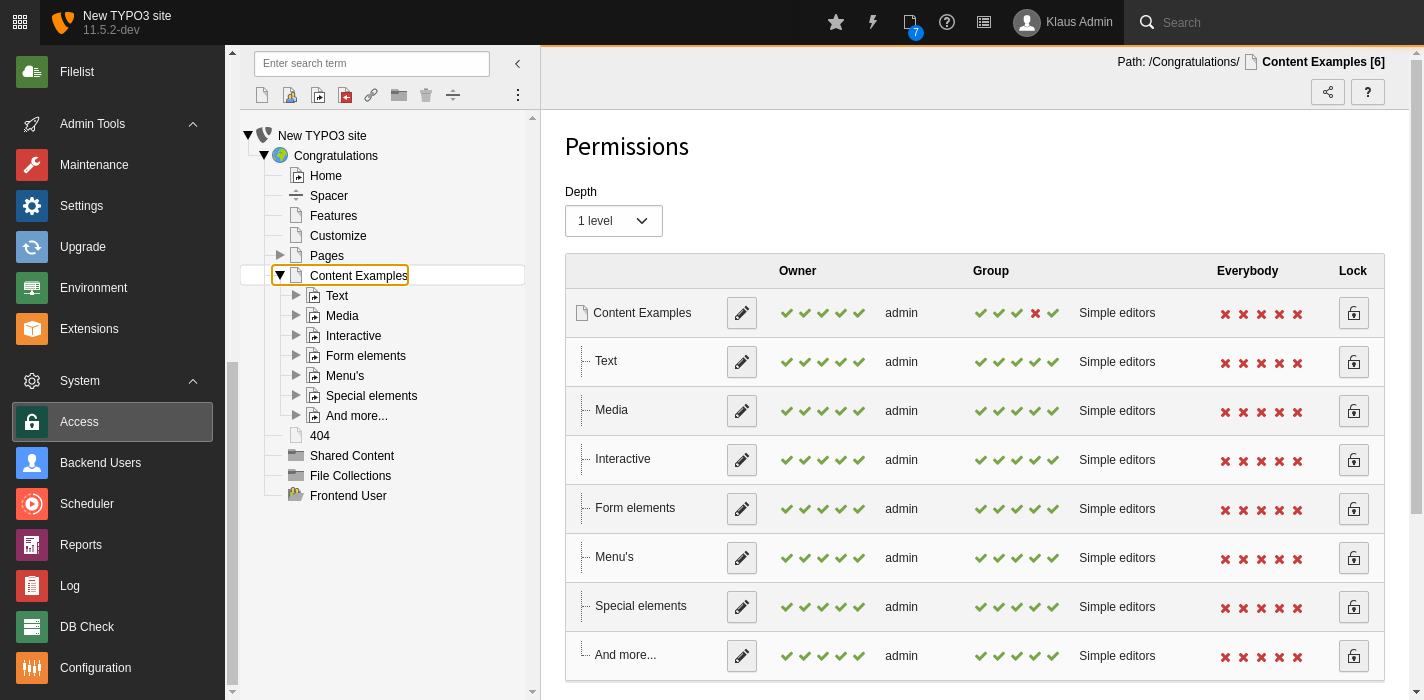
The Access module and its overview of page rights and owners
Editing permissions is described in details in chapter Page permissions.
A user must be "admin" or the owner of a page in order to edit its permissions.
When a user creates new pages in TYPO3 CMS they will by default get the creating user as owner. The owner group will be set to the first listed user group configured for the users record (if any). These defaults can be changed through page TSconfig.
User TSconfig
User TSconfig is a hierarchical configuration structure entered in plain text TypoScript. It can be used by all kinds of applications inside of TYPO3 CMS to retrieve customized settings for users which relates to a certain module or part. The options available are described in the document TSconfig .
